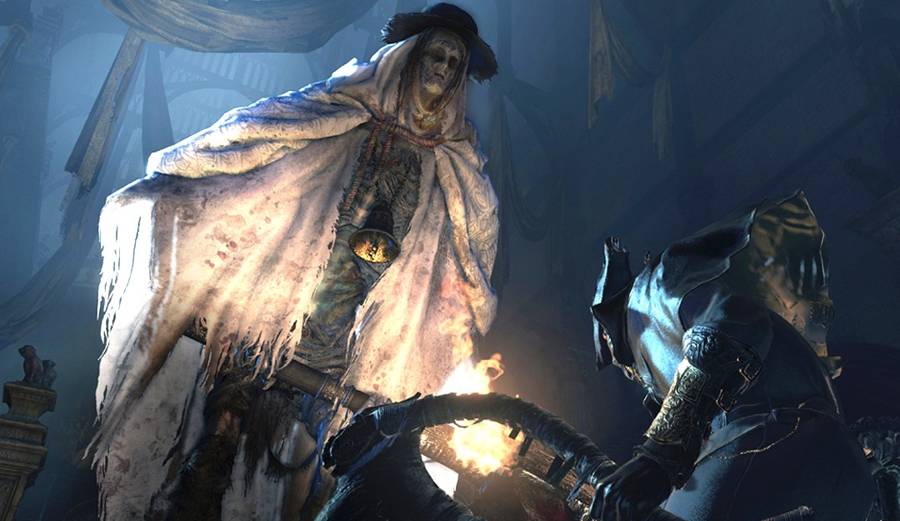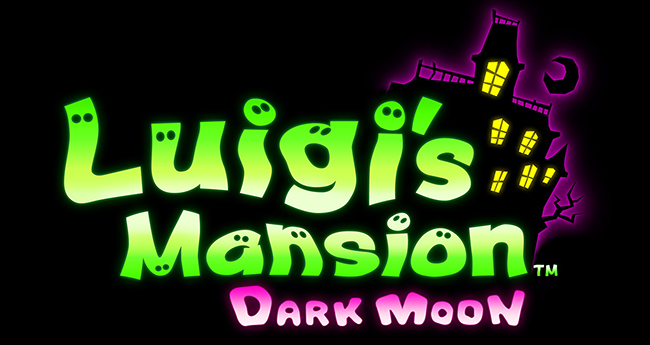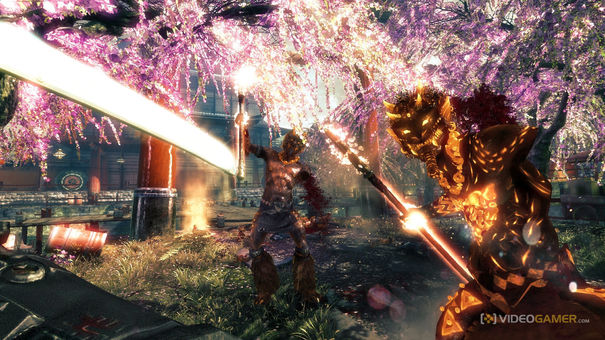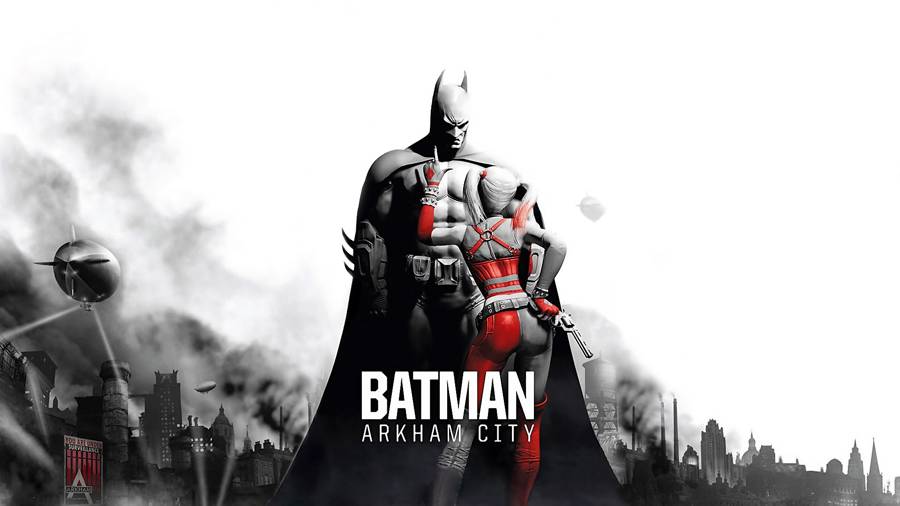

It wasn’t that long ago that the original Tales of Xillia hit English-speaking shores – you may recall Shane’s review around this time last year – so the speedy arrival of its sequel is well-appreciated. I quite enjoyed the first title’s mixture of fantasy and sci-fi, and it had without a doubt the best evolution of the Tales series’ LMBS (Linear Motion Battle System) to date. With Tales of Xillia 2 hot on its heels, is there enough new stuff to draw you in?
Tales of Xillia 2 follows an all-new protagonist in the Xillia universe, Ludger Kresnik, native of the technologically-advanced world of Elympios. A year after the resolution of the first game, he is on his way to start his new job as a cook when things get complicated (as they often do for RPG protagonists). A young girl named Elle accuses him of attempted kidnapping as cover to sneak onto a train, forcing Ludger to chase after her to clear his name. Unfortunately, a terrorist attack on the train forces him to partner up with Xillia 1 castmember Jude to stop them, and along the way Ludger is confronted by a shadowy version of his brother Julius who does his best to commit some fratricide. Ludger comes out victorious, revealing strange new abilities – and getting himself seriously injured in the process.
Thankfully, the ever-friendly Spirius Corporation is happy to mend his, Jude and Elle’s wounds and lump him with a hefty ten million Gald debt to repay, setting up the game’s primary goal… Pay back that debt. At first mention this seems like a really tedious mechanic, but it honestly works pretty well. In the pursuit of Julius for answers about his presence on the train and the greater mystery of Ludger’s new powers, Ludger has to repay chunks of his debt to remove travel restrictions to the greater regions of Elympios and Rieze Maxia. This is done through your usual battle grind and jobs posted for material collections and monster hunts. Later on you also start receiving payments from the Spirius Corporation for investigating fractured dimensions that have started popping up since the Schism separating Elympios and Rieze Maxia was dissolved in the first game, speeding up the process.
A lot of the new mechanics of this game spring out of the debt system, such as the aforementioned job listings. You’ll also unlock a ‘Kitty Dispatch’ subquest that lets you send cats you rescue out into the world to collect items. These include cosmetic items for your characters as well as many used to complete the item hunt jobs, of which quite a few are exclusively available this way. Between story segments you’ll also unlock ‘character chapters’, allowing you to pursue sidequests with each party member that delve further into their individual stories. Completion of these offer numerous bonuses: alternate costumes, new combat skills, bonus scenes in main story segments, and cold hard cash. On the combat side, you also have a wide variety of elite monsters dropping into the world for you to hunt, which can rival some of the main campaign bosses in terms of difficulty, but pay out well in return.
The combat system itself will be immediately familiar to any who played the first game. There’s the usual ability to move around in three dimensions or linearly on a plane with your enemies, and the Link system returns allowing you to pair up with one of your three party members to team up on enemies and engage unique combat bonus skills. Added to this are Ludger’s ability to switch between three weapon types: dual daggers, hammers and pistols. Different enemies will have different elemental and weapon type weaknesses, meaning that constantly switching between these options is your best path to a smooth victory. Initiating combo attacks with your Link partner will also present as either a generic or unique attack, dependant on your weapon choice – Leia’s staff combos with your hammer, Alvin’s pistol combos with your guns, and so on. Over time Ludger will also unlock a new combat mode akin to a Limit Break, but I won’t go into any more detail so as not to spoil it.
The new additions to the party this go-round are somewhat jarring, to say the least. With all main characters from the first game returning, your only new additions are Gaius and Muzét, both of whom are characters from the first game as well as being the VILLAINS of the previous game. Not only does this mean that everyone simply accepts the evil spirit and deranged king into their circle of friends despite their attempts to kill each other only a year ago – a fact that nobody mentions at any point in my 15-20 hours of play – but it also means that Ludger is the ONLY new party member unique to Xillia 2. Gaius and Ludger do bring some new facets to combat, but character-wise they’re just an evolution of what you’ve already seen.
The reuse of elements of the first game is something you’ll have to get used to here. The return of your entire old party, sound elements and locations is something of a double-edged sword. On the plus side, the return of your party lets you see how the events of the first game affected them and their relationships, and the return of previous locations lends an instant sense of familiarity. On the other hand, there are very few new locations to be experienced here, which means you lose that sense of exploration as you roam from one place to another. I’m not sure that any of the carried-over field locations have been modified at all, in fact. Several hidey-holes that would have hidden chests and other loot in the first game stand empty here, and have save points rooted in story scenes from the first outing that make no sense when the area is less significant this time around. Background effects are also identical at first listen (anyone recall the alerts to mutton and their freshness from Sharilton?), meaning little changes in many areas beyond the placement and dialogue of NPCs. It’s this balance between familiarity and lack of change that the game has a little trouble with, but not enough to discourage me from continuing.
All in all, the game offers a different type of experience to its predecessor. The progression of the story is episodic rather than flowing, and revolves around individual and distinct goalposts rather than a slow burn and opening-up of the story. In Xillia 1 you were learning the situation as you went, whilst Xillia 2 clearly spells out the premise to you from characters in the know. It’s to be expected from a world that has had time to grow and expand over two games, but it will be a surprise if you’re expecting the same experience over again. Tales of Xillia 2 does better than a lot of RPG sequels, so it’s worth your time -– so long as you’ve played its predecessor first. This isn’t a story you want to dive into halfway.




 Walkthrough Bulb Boy
Walkthrough Bulb Boy Batman Arkham City Meltdown Mayhem Walkthrough
Batman Arkham City Meltdown Mayhem Walkthrough A Novel Idea
A Novel Idea Super Mario 3D Land World 3 Star Coin Locations
Super Mario 3D Land World 3 Star Coin Locations 10 of the Best PC Games 2009 - Mana Pools Top PC Games 2009
10 of the Best PC Games 2009 - Mana Pools Top PC Games 2009